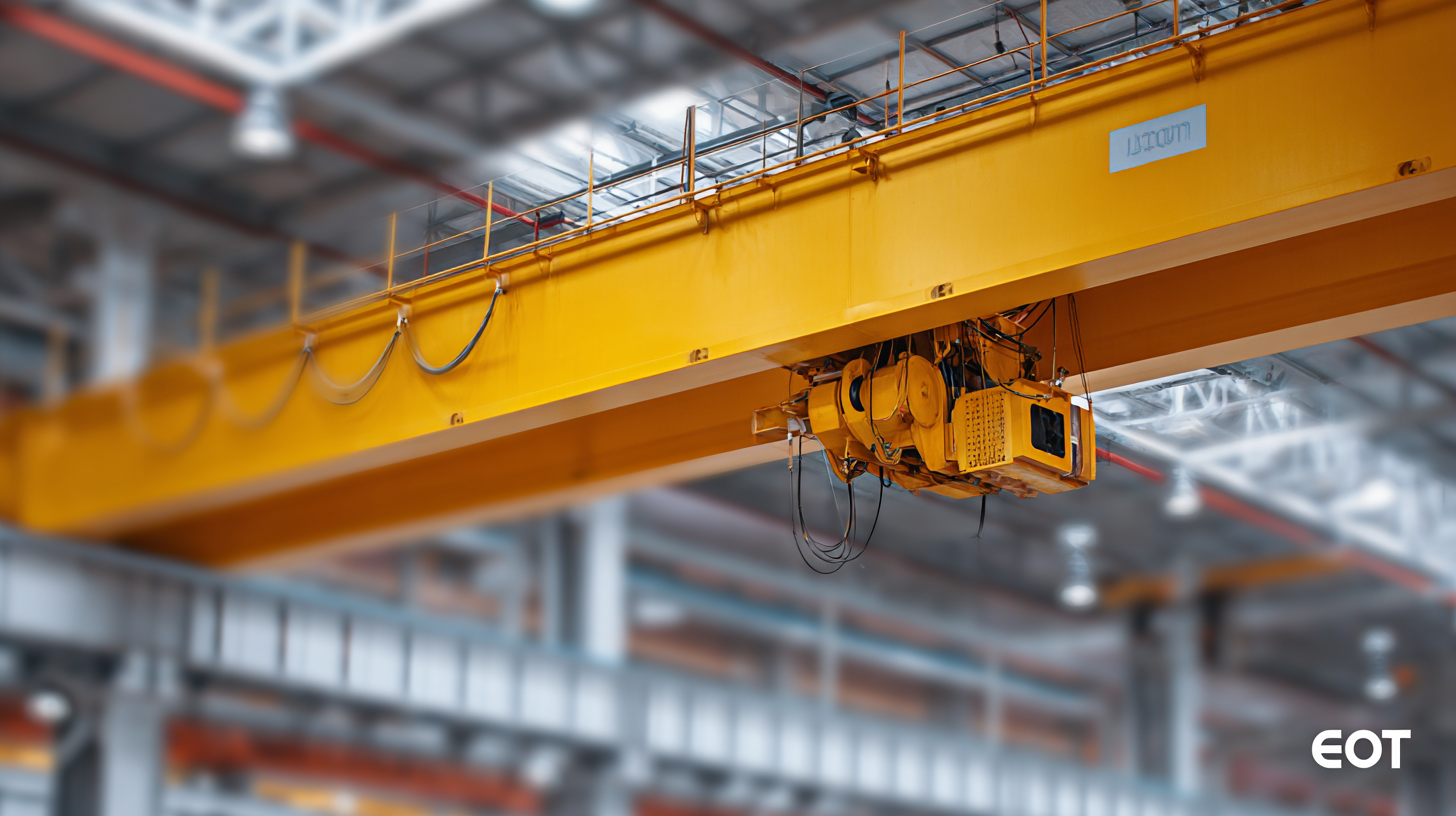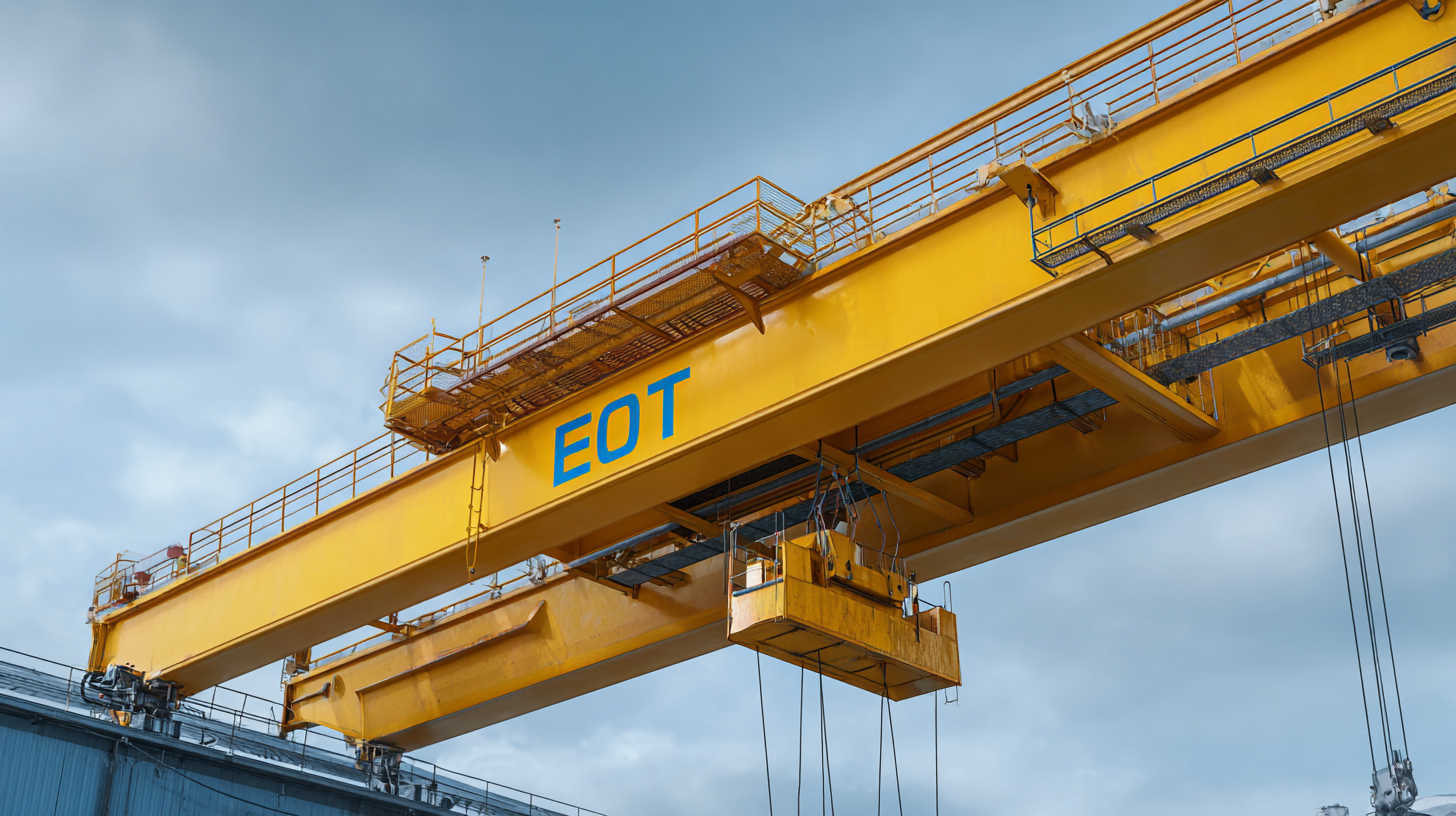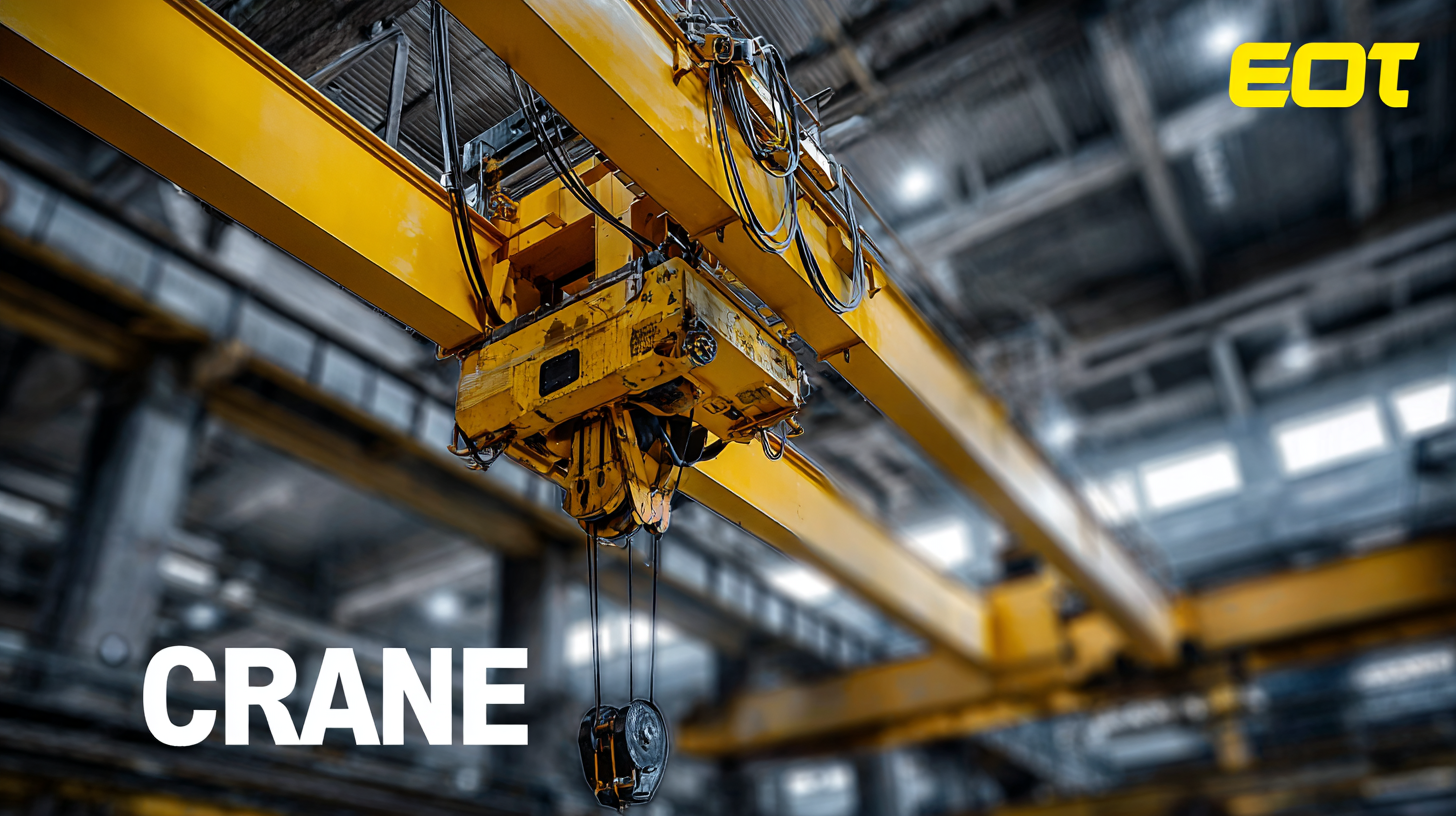Inquiry
Form loading...
-
Phone
-
Wechat

-
Whatsapp

In the fast-evolving landscape of industrial machinery, selecting the right equipment is crucial for optimizing workflow and enhancing productivity. Among various options, the Eot Crane (Electric Overhead Traveling Crane) stands out as a vital component in many sectors, from manufacturing to construction. According to a report by ResearchAndMarkets, the global crane market is projected to reach $41.2 billion by 2027, with Eot Cranes playing a significant role due to their efficiency and reliability in material handling processes. However, choosing the best Eot Crane for specific industrial needs involves a careful assessment of various factors, including load capacity, span length, and operational environment. This blog aims to provide a comprehensive checklist to help industry professionals make informed decisions when selecting the ideal Eot Crane, ensuring they invest in equipment that meets their unique requirements.

When selecting the best Eot crane for industrial applications, understanding the key features and their importance is paramount. An Eot (Electric Overhead Traveling) crane is a vital piece of equipment in various industries, facilitating the movement of heavy materials across a workspace. Essential features to consider include the crane’s load capacity, span, lift height, and control systems. Each element not only influences operational efficiency but also ensures safety and reliability in demanding environments. In an era where data-driven decisions are becoming the norm, leveraging modern technologies can further enhance crane selection processes, making them more precise and tailored to specific industrial needs.
In today's digitized landscape, the integration of advanced technologies, such as artificial intelligence and machine learning, plays a crucial role in optimizing crane performance. For instance, predictive analytics can assess the structural integrity of cranes over time, thus promoting maintenance schedules that are informed by data rather than routine checks. Similarly, the rise of industrial software enhances operational efficiency through better planning and resource allocation. As industries increasingly recognize the importance of these innovations, choosing the right Eot crane becomes not only a matter of physical specifications but also an opportunity to leverage technology for improved productivity and safety in the workplace.
This chart represents the key features of Eot Cranes and their importance in different industries. Understanding these features will help you make an informed choice for your industrial needs.
When selecting the right EOT (Electric Overhead Traveling) crane for specific applications, it's essential to understand the various types available and their unique features. There are several models tailored for different industrial needs, including single girder and double girder cranes. Single girder cranes are typically lighter and more cost-effective, ideal for smaller facilities or less demanding tasks. In contrast, double girder cranes provide greater lifting capacity and are better suited for heavier loads and larger spaces, making them popular in manufacturing and logistics.

Another vital consideration in the selection process is the integration of modern safety features. Anti-sway technology has become increasingly important in crane modernization projects. This innovative feature enhances load stability and operator safety by reducing the swinging motion of suspended loads during movement. Additionally, the adoption of integrated digital controls is a significant advancement, especially in the context of Industry 4.0. These controls facilitate more precise maneuvering and improve overall operational efficiency, making them a worthwhile investment for any industrial operation looking to optimize its lifting processes.
When selecting an EOT (Electric Overhead Traveling) crane, one of the primary considerations is whether to choose an electric or manual model. Electric EOT cranes are often favored in industrial settings due to their efficiency and ease of use. They offer smooth operation, allowing for precise control over heavy loads, which is essential in high-paced environments. Moreover, electric cranes require less manual labor, reducing the risk of injury and fatigue among workers.
On the other hand, manual EOT cranes present a more cost-effective option, especially for smaller operations or those with lighter loads. While they demand greater physical effort, they can be a suitable choice if the frequency of lifting operations is low. It's crucial, however, to assess the workload and determine if the benefits of automation provided by electric models outweigh the initial investment costs.
Tips: Consider the specific lifting requirements of your operation. If heavy lifting is a daily activity, an electric crane might be worth the investment. Additionally, evaluate maintenance costs and user training. Ensuring that your staff is properly trained on the crane type chosen will enhance safety and efficiency in your industrial processes. Lastly, examine the power supply availability in your facility, as this can impact the feasibility of using electric cranes.
When selecting an EOT (Electric Overhead Traveling) crane for your facility, safety should always be a top priority.
Begin by considering the weight capacity of the crane, which should align with the maximum load you intend to lift. Exceeding the weight limit can lead to mechanical failures, endangering operators and nearby personnel. Additionally, ensure that the crane’s design includes safety features such as overload protection, emergency stop buttons, and limit switches that prevent cranes from moving beyond their operational range.
Another critical aspect is the crane's installation and maintenance. A properly trained technician should oversee the installation to guarantee compliance with safety standards. Regular maintenance checks are essential to identify and rectify potential flaws before they escalate into serious issues. Consider a maintenance schedule that accommodates the frequency of use to ensure that all components, including cables, hooks, and brakes, remain in optimal condition. By prioritizing these safety considerations, you can minimize risks and create a safer working environment for everyone involved.
Maintaining your EOT (Electric Overhead Travel) crane is essential for ensuring its longevity and efficient operation in industrial settings. One of the most important maintenance tips is to regularly inspect all mechanical components, including the hoists, trolley wheels, and rail systems. Look for signs of wear, corrosion, or misalignment that could lead to operational failures. Keeping these components well-lubricated can also prevent excessive friction, ultimately extending the life of the crane.
Another critical aspect of EOT crane maintenance is monitoring the electrical systems. Regularly checking connections, ensuring that wiring is intact, and testing safety controls can prevent electrical failures that could halt operations. It's also advisable to keep the crane's operating environment clean and free of debris, as dirt and contaminants can interfere with performance. By adhering to these maintenance practices, you can enhance the reliability of your EOT crane and reduce the likelihood of costly repairs or downtime.

